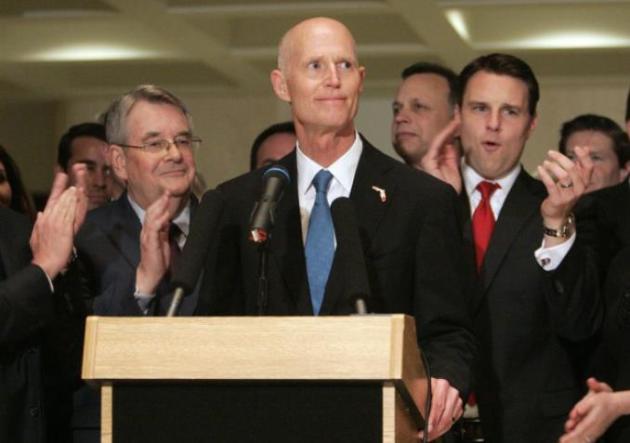
Perfection
I know I shouldn’t be editorializing about the weather, but after a shriek-worthy Pioneer Winter and a cruel, soggy, November-like spring, we finally have reason to cheer!
Today will be the day you were daydreaming about back in February. Or last week, come to think of it. Blue sky, a few popcorn cumulus clouds this afternoon, a gentle breeze and very little humidity. No skeeters showing up on Doppler, either. Perfect.
Sneak off to the cabin early (even if you don’t have a cabin) and make the most of tomorrow. Saturday still looks like the driest day of the 3-day weekend with lake-worthy highs in the upper 70s to near 80F.
The approach of a sticky warm front ignites random T-storms Saturday night into Monday. Not a continuous rain event, but when it does rain it may come down pretty hard at times.
I would wager a stale bagel that Sunday will be the wettest day, with a few hours of rain. By Memorial Day we break out into a partly sunny, murky airmass on the warm side of the front. Highs surge into the low 80s, with a nagging, late-day thunder risk. In fact every day next week will bring 80s. Instant summer.
Today’s blog includes weekend weather details and NOAA’s official hurricane prediction for 2014.
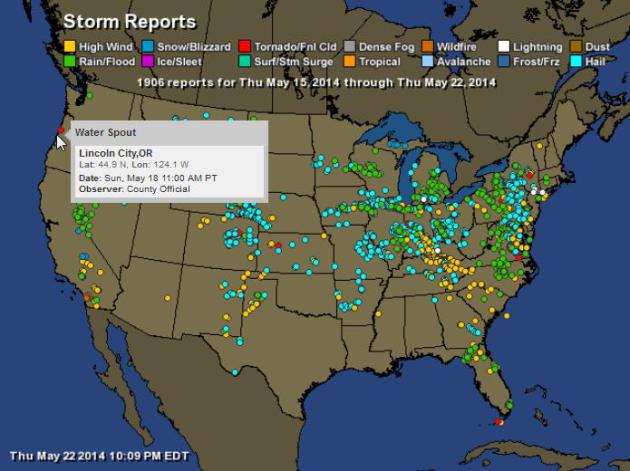
Nearly 2,000 Severe Storm Reports Last 7 Days. Data from NOAA and HAMweather shows a rash of 24-hour rainfall records (green markers) from the Twin Cities to Lower Michigan, the Ohio Valley and Mid Atlantic, with tornado touchdowns (red markers) from near Denver to Albany, Norfolk and a rare waterspout nera Lincoln City Oregon last Sunday.

Light-Switch Summer. After limping along below average for week after week (70s are suddenly a very big deal across Minnesota) long range ECMWF guidance shows 5 days in a row above 80F next week. Saturday still looks like the driest day of the holiday weekend, a few scattered showers and T-storms Sunday and Memorial Day as a sticky warm front limps north. With highs in the low 80s Monday may turn out to be the best day for the lake and beach. We’ll see. Data visualization: Weatherspark.
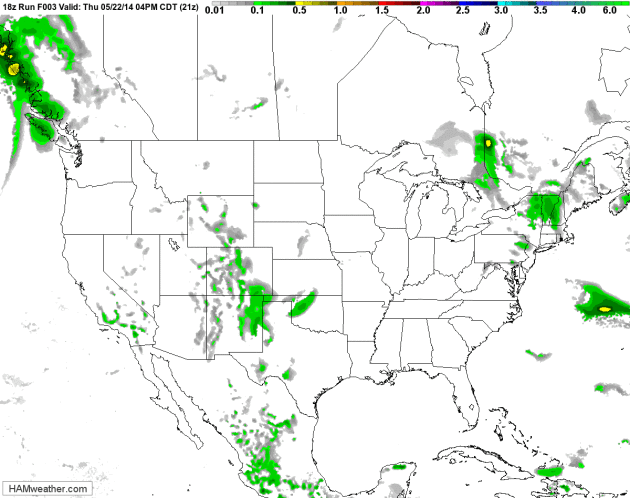
84 Hour Future Radar. NOAA’s 12 km NAM data shows an outbreak of (soaking) showers and storms across the Plains states, reaching the Upper Midwest by Sunday and Monday. Heavy showers and T-storms over New England today give way to a drying trend over the weekend with a lingering cool bias. Meanwhile with the exception of the the Pacific Northwest most of the western USA remains dry. Animation: HAMweather.
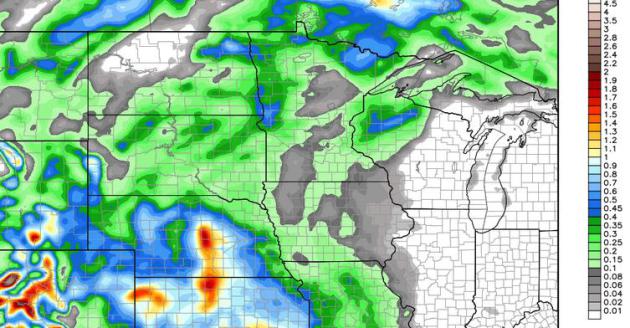
Rainfall Amounts. By Monday morning some .5″+ rainfall amounts are predicted for northwest Wisconsin and west central Minnesota, but latest NAM runs aren’t quite as wet as previous runs. I still get nervous when warm fronts approach in May and June; capable of triggering most nocturnal T-storms that spill over into the morning hours. Saturday looks safe – but keep an eye out for lightning Sunday and Monday. Rainfall forecast: WeatherBell.
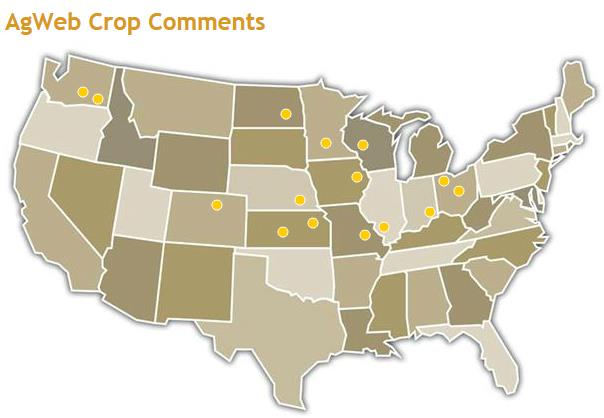
Fickle Spring Impacting Spring Planting. Check out some of the comments from farmers on AgWeb.
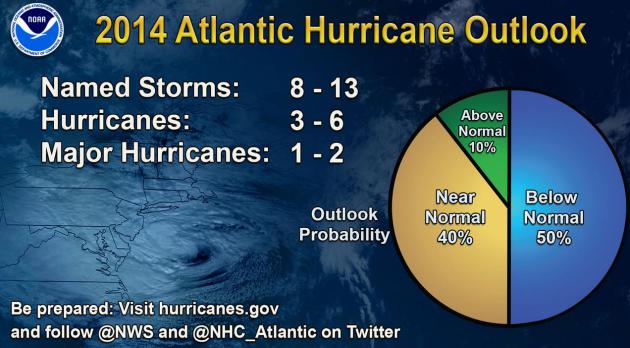
NOAA Predicts Near-Normal or Below-Normal 2014 Hurricane Season. A big factor to consider is El Nino, which usually increases wind shear over the tropics, reducing the potential for tropical development somewhat. Then again, all it takes is one. Here’s an excerpt of Thursday’s official NOAA NHC hurricane prediction for the upcoming season: “…The main driver of this year’s outlook is the anticipated development of El Niño this summer. El Niño causes stronger wind shear, which reduces the number and intensity of tropical storms and hurricanes. El Niño can also strengthen the trade winds and increase the atmospheric stability across the tropical Atlantic, making it more difficult for cloud systems coming off of Africa to intensify into tropical storms. The outlook calls for a 50 percent chance of a below-normal season, a 40 percent chance of a near-normal season, and only a 10 percent chance of an above-normal season. For the six-month hurricane season, which begins June 1, NOAA predicts a 70 percent likelihood of 8 to 13 named storms (winds of 39 mph or higher), of which 3 to 6 could become hurricanes (winds of 74 mph or higher), including 1 to 2 major hurricanes (Category 3, 4 or 5; winds of 111 mph or higher)…”
* The Orlando Sentinel reminds us that it’s not the sheer number of hurricanes and tropical storms that matter – but where they go, and how intense they become before landfall.
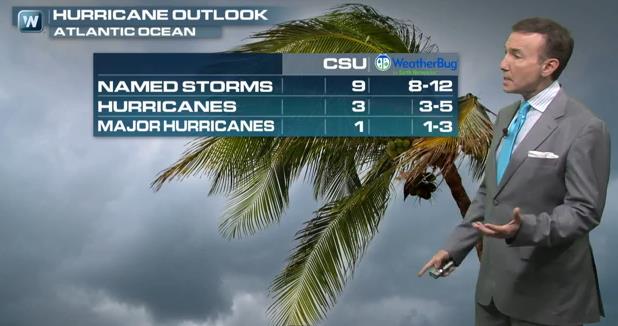
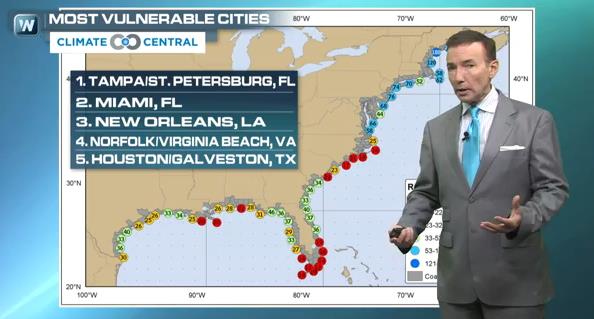
More Background on NOAA’s 2014 Hurricane Outlook. El Nino is a factor in this year’s prediction of fewer hurricanes, along with cooler water in the Atlantic. But there is lingering concern about complacency. All it takes is one hurricane, coming at the wrong time and place, to cause serious problems. In today’s Climate Matters segments we look at the Hurricane Outlook from NOAA, Colorado State and WeatherBug, and how rising seas and land subsidence are leaving some metro areas more vulnerable to tropical storm surge flooding than others.
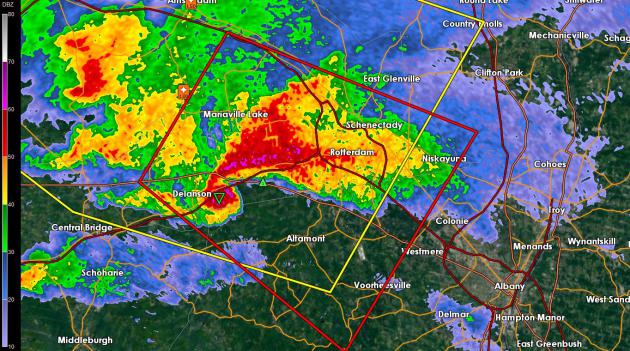
Changes Coming to NEXRAD Doppler Radar. 2-3 minute updates for .5 degree base scans? That’s a huge advance over the current 5-6 minute updates. If you’re up for a little light reading check out the other changes coming to NWS Doppler in this 53 slide presentation; here’s an excerpt: “The biggest change will be the introduction of the SAILS algorithm that will allow the 0.5 base scans to take place twice during a volume scan. This means that the lowest elevation cut (which most of you probably use and show on broadcasts) will update every 2 – 3 minutes instead of the current 5 – 6 minutes. Essentially, the radar will stop at a point of our local designation, go back down to 0.5, rescan, then go back up to where it left off. The trade off is that the end-of-scan products (eg. VIL, TVS, Storm Total Precip, etc) will have slightly longer intervals between updates. Please note that this will only take place when we are in a storm surveillance coverage pattern (212 or 12) and that even when we are in one of those 2 modes, we do have the ability to turn it off…”

Wow, Wyoming: Surreal Supercell Thunderstorm Time Lapse. Jason Samenow at Capital Weather Gang provides a link and detail to an amazing example of a supercell thunderstorm: “Fledgling low pressure forming downwind of the Rockies spun up a towering thunderstorm so imposing that the footage almost seems fake – as if from a sci-fi movie or another planet. Spectacular cannot even describe the time lapse video from this spinning supercell storm that blossomed in eastern Wyoming Sunday evening, near Newcastle..”
Video by BasehuntersChasing on YouTube
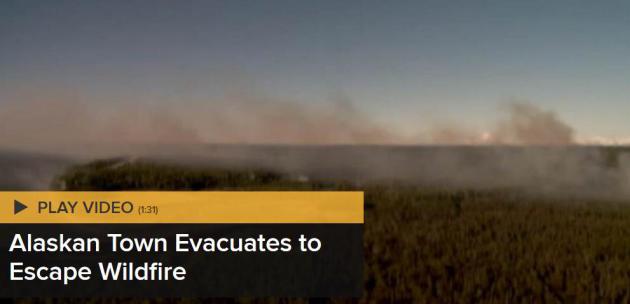
Alaska Town Evacuates To Escape Wildfire. One side-effect of an unusually warm and dry winter and spring for Alaska is a heightened risk of wildfires. Here’s a link to a video from NBC News.

As California Wildfire Season Looms, One County Stands Out as Unprepared. San Diego has the distinction of having the finest weather (and overall climate) in the United States – although folks in Hawaii might argue with that assertion. But are they fully prepared for what may turn into a record season for wildfires? Here’s an excerpt from Christian Science Monitor: “…But San Diego stands out as “easily one of the least prepared [counties] in the entire country,” even though it is one of the most fire-prone regions of the state, says Richard Halsey, president of the California Chaparral Institute in Escondido. Some blame county taxpayers for refusing to add fees that would boost local firefighting efforts. Others say political leaders have not provided taxpayers with a plan worth supporting…”
File photo credit above: “Marines move military vehicles near the entrance to Marine Corps Camp Pendleton in front of smoke plumes from the Las Pulgas wildfire burning on base Friday, May 16, 2014, in Oceanside, Calif. San Diego County officials said Friday five wildfires have been 100 percent contained. Still, crews were focusing efforts on two large fires — one in the city of San Marcos and two blazes at the Marine Corps’ Camp Pendleton.” (AP Photo/Gregory Bull)

Sound Crazy? How To Fight Wildfires With Explosives. An interesting concept, so long as those explosives don’t set off new wildfires. USA TODAY has the video and story; here’s an excerpt: “While it’s normal to see air tankers dropping massive loads of water onto raging wildfires, an Australian researcher says he may have a better idea: explosives. Professor Graham Doig says it’s not as crazy as it first sounds. Oilfield firefighters have used similar techniques for decades to snuff out oil-well fires. The blast knocks the flames off the fuel source, putting out the fire…”
Photo credit above: “A new way thought to put out wildfires, explosions. This novel idea from an Australian professor.” Trevor Hughes, USA TODAY.
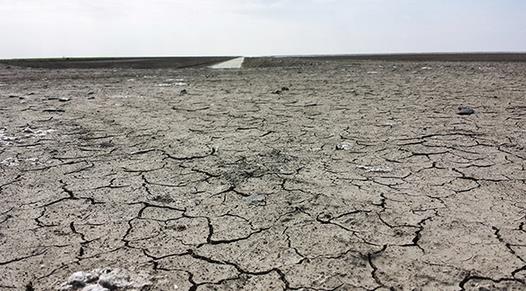
Thirsty West: Lose-Lose Situation. Historic drought is a big part of the story, but there may be more to the story, according to Eric Holthaus. Here’s an excerpt of his recent story at Slate: “…This year, water that would have been diverted to thirsty fields never came. That’s mostly due to straight-up lack of water. After all, the state is in the midst of months and months of practically no rain and currently has the slimmest snowpack on record—just 4 percent of normal as of Tuesday. But part of the dwindling water supply has been kept in streams, to keep sensitive rivers flowing. According to some farmers here, that means the extreme lack of water is partly the government’s fault. They’ve got a case…”
Photo credit: “What remains of Tulare Lake, once the biggest freshwater lake west of the Mississippi.” Courtesy of Eric Holthaus.
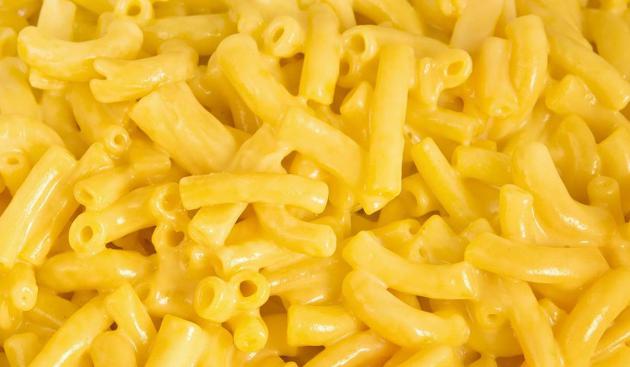
Just How Much Dye Is In Your Food? The short answer: too much. Here’s an excerpt of an eye-opening article at Modern Farmer: “…Tests have been conducted in the past looking for links between consumption of food dye and behavioral issues in children. Stevens says the tests, conducted in the ‘70s and ‘80s, used a baseline of 27 milligrams of mixed dyes – around half the amount of dye found in an 8 oz. serving of Burst Cherry Kool-Aid. Stevens says tests were also done to observe the effects of children on higher doses of dye — around 50 to 100 milligrams. “They found conclusive links between consuming these high levels and behavioral problems. However at the time they didn’t think children would ever be able to consume that much dye,” says Stevens...”

I Don’t Need No Stinking Shower! My wife would beg to disagree, but I found this article at The New York Times fascinating – a scientific argument for going without showers, in fact we should be adding (good) bacteria to our bodies. Remember when life was simpler? Here’s a clip: “…The tonic looks, feels and tastes like water, but each spray bottle of AO+ Refreshing Cosmetic Mist contains billions of cultivated Nitrosomonas eutropha, an ammonia-oxidizing bacteria (AOB) that is most commonly found in dirt and untreated water. AOBiome scientists hypothesize that it once lived happily on us too — before we started washing it away with soap and shampoo — acting as a built-in cleanser, deodorant, anti-inflammatory and immune booster by feeding on the ammonia in our sweat and converting it into nitrite and nitric oxide….”
Artwork credit: Dan Cassaro. Photograph by Jens Mortensen for The New York Times.
Read more: http://www.smithsonianmag.com/travel/giant-hole-ground-has-been-fire-more-40-years-180951247/#JtGj8Be41q17sPgo.99
Give the gift of Smithsonian magazine for only $12! http://bit.ly/1cGUiGv
Follow us: @SmithsonianMag on Twitter

The Simple, Brilliant Logic Behind AT&T’s Purchase of DirecTV. Quartz has an interesting story about where the future of television may be heading; here’s a clip: “…This morning, at a conference hosted by JPMorgan, AT&T’s chief financial officer, John Stephens, offered the best explanation of it yet. He made it clear that AT&T is setting out to explode the boundaries that separate different modes of watching television. Stephens explained that the proposed joint company plans to leverage its huge customer base across several platforms to negotiate better deals with TV’s content providers. It will then deliver that content on every screen imaginable—over its wireless and fixed-line networks, “over-the-top” on the internet, and via satellite…”
Photo credit above: “Names you might soon see on all your screens.” AP Photo/ Seth Perlman, Reed Saxon.

6 Moments When We Spend Too Much Money. Next Avenue has an article with good advice about the psychology of money – when we should just walk away. Here’s an excerpt: “Here’s the bad news: Time and again, no matter how much you scrimp and save, impulse buys wreck your whole budget. Here’s the good news: We identified those wasteful moments, and got actionable, real-life tips for resisting temptation from personal finance expert Donna Freedman, who writes for Money Talks News, MSN Money, Woman’s Day, and many more. (Catch her at DonnaFreedman.com.) Read on for her strategies, and say goodbye to those money mishaps…”

A Brazilian Street Artist Has Created The World Cup’s First Viral Image. 3 weeks until the World Cup and the image above is, as they say, “trending”. Here’s a clip from a story at Slate: “…I first saw the image when The Nation’s Dave Zirin posted it on Twitter. The portrait of a weeping, starving Brazilian child with nothing to eat but a soccer ball is so simple and evocative that you don’t need to know much about Brazil to wrap your head around it. All you have to understand is that despite massive gains made over the past decade, poverty levels are still appallingly high, and the World Cup is costing the nation billions of dollars that could be spent elsewhere…”
Image credit courtesy of Paulo Ito. https://www.flickr.com/photos/pauloito/13998946669

18 Things You Miss By Constantly Staring At Your Smartphone. Only 18? Here’s a good start, courtesy of Huffington Post: “If any doubt remains in your mind that we are, in fact, a society addicted our smartphones, stop what you’re doing and simply take a look around. There’s a pretty good chance that the majority of the people around you staring down at their palms, scrolling Twitter feeds or engrossed in texting conversations — headphones optional. And when you think of the last time you were in the same position, it may be just a few seconds ago…”

TODAY: As good as it gets. Blue sky, light winds, low humidity. Winds: SE 8. High: 75
FRIDAY NIGHT: Mostly clear and pleasant. Low: 54
SATURDAY: Driest day of the holiday weekend. Partly sunny. Winds: S 10-15. High: near 80
SATURDAY NIGHT: Clouds increase, risk of a shower late. Low: 59
SUNDAY: Humid & unsettled with more clouds than sun – risk of a T-storm. Winds: S 15. High: 80
MEMORIAL DAY: Some hazy sun. More T-storms. Wake-up: 62. High: 82
TUESDAY: Sticky sun. PM storms southern MN. Wake-up: 64. High: 84
WEDNESDAY: Very warm. Feels like summer. Wake-up: 64. High: 85
THURSDAY: Steamy sun, late-day T-storm? Wake-up: 65. High: 86
Climate Stories…

How Climate Change Harms National Security. Here’s an excerpt of an Op-Ed at The Detroit News: “…In the U.S., sea level rise threatens military and civilian infrastructure and, already, the National Guard, the reserve, and the Army Corps of Engineers respond more frequently to wildfires, floods, snow events, and droughts both at home and abroad, restricting their availability to serve on other missions. It is the military’s fundamental purpose, as our report states, to “protect the homeland; build security globally; project power; and win our nation’s wars.” But anticipated changes in our environment will stress many components that contribute to the military’s readiness to perform those missions…”

Climate Change To Result In Less Nutritional Food, Report Says. Here’s a clip from The Los Angeles Times: “…Crops grown by many of the nation’s farmers have a lower nutritional content than they once did, according to the report by the Chicago Council on Global Affairs. Research indicates that higher carbon dioxide levels in the atmosphere have reduced the protein content in wheat, for example. And the International Rice Research Institute has warned that the quality of rice available to consumers will decrease as temperatures rise, the report noted…”

Pope Francis Makes Biblical Case for Addressing Climate Change: “If We Destroy Creation, Creation Will Destroy Us”. Here’s a clip from a story at ThinkProgress that made me do a double-take: “…Creation is not a property, which we can rule over at will; or, even less, is the property of only a few: Creation is a gift, it is a wonderful gift that God has given us, so that we care for it and we use it for the benefit of all, always with great respect and gratitude,” Francis said. Francis also said that humanity’s destruction of the planet is a sinful act, likening it to self-idolatry. “But when we exploit Creation we destroy the sign of God’s love for us, in destroying Creation we are saying to God: ‘I don’t like it! This is not good!’ ‘So what do you like?’ ‘I like myself!’ – Here, this is sin! Do you see?”… (Photo credit: AP).
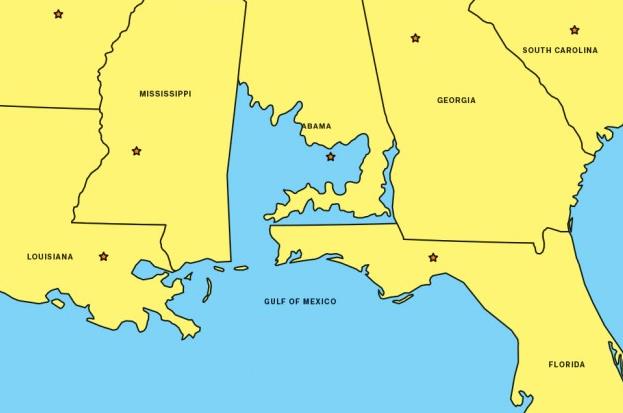
Alabama’s Climate Change Deniers Refuse to Save the State. Bloomberg Businessweek has the story – here’s an excerpt: “…Even as the federal government’s new National Climate Assessment cautions that storm surges may one day leave coastal communities such as Mobile under as much as 25 feet of water, state leaders persist in saying global warming is a sham and resist spending money to prepare for it. Trip Pittman, a Republican state senator who represents Baldwin County on the east side of Mobile Bay, calls federal research on climate change “bad science” and “fear-mongering.” Spending millions based on such predictions doesn’t make sense, he says. “What are the costs of us going on these crusades, these environmental crusades?” says Pittman. “We’ve elevated environmentalism into some kind of religion…”
Illustration above: 731.

The Clarion Call to Action on Climate Change Will Be Made by the Next Generation. Here’s a clip from Graham Wayne at Small Epiphanies: “Closing the extreme weather generation gap brings climate change reality to the public in a way that no amount of demagoguery can defeat. When it comes to doing something about it, the most intractable climate change problem is grass-roots political support. Without a clear mandate, there can be no substantive legislative progress. It’s a brave politician indeed who supports a course of action pretty much guaranteed to terminate his career. A clear, unequivocal mandate is a must: it’s absence to date is the biggest barrier to meaningful and enduring political action…”

The Climate Context for “Unprecedented” Balkans Flooding. Another “cut-off” low pressure system was the culprit, yet another instance where weather systems slow or even stall for days or weeks at a time. Are we imagining this as a trend that’s on the increase or cherry-picking specific storms? The answer is still unclear, but there’s growing evidence that rapid warming of far northern latitudes is impacting jet stream winds and configurations, increasing the potential for weather systems that get stuck. Here’s a clip from Climate Central: “…The flooding event began on May 13 when an area of low pressure developed as warm, moist air from over the Mediterranean Sea clashed with colder air from the north. The low became cut-off from the jet stream, which would ordinarily usher the system across the region — instead, it remained parked over southeast Europe, dumping rain for several days…”
Photo credit above: “A flooded area is seen in Obrenovac, some 30 kilometers (18 miles) southwest of Belgrade, Serbia, Monday, May 19, 2014. Belgrade braced for a river surge Monday that threatened to inundate Serbia’s main power plant and cause major power cuts in the crisis-stricken country as the Balkans struggle with the consequences of the worst flooding in southeastern Europe in more than a century. At least 35 people have died in Serbia and Bosnia in the five days of flooding caused by unprecedented torrential rain, laying waste to entire towns and villages and sending tens of thousands of people out of their homes, authorities said.” (AP Photo).

Global Warming: Never Mind the Models, Just Look out of The Bloody Window. Here’s a snippet of a post from Graham Wayne – are all these weather oddities (worldwide) a fluke, a coincidence, or can we connect the dots? “…It comes as some relief then to read that when Christine Figueres visited the Guardian’s UK offices this week, she discussed climate change in an appropriately global context: “The “very strange” weather experienced across the world over the last two years was a sign “we are [already] experiencing climate change,” insisted the executive secretary of the UN climate secretariat. “If you take them individually you can say maybe it’s a fluke. The problem is it’s not a fluke and you can’t take them individually. What it’s doing is giving us a pattern of abnormality that’s becoming the norm…”
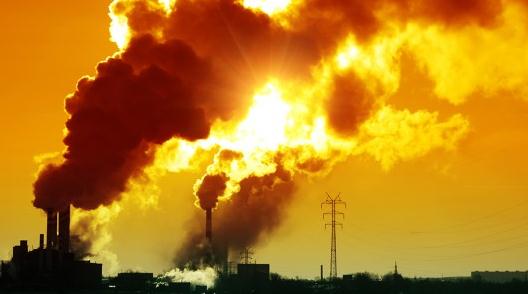
The Bible Calls for Moral Action on Climate Change. Here’s the introduction of an Op-Ed from Jim Wallis at TIME.com: “To ignore climate change is to abuse the moral call to care for the environment, and generations to come will suffer. Some of the most inspiring words in the entire Bible are found in the opening pages of Genesis. Here we are told that humans were created in God’s image and given a divine mandate to care for Creation (Gen. 1:26-31). Our vocation—our calling—is to partner with God in preserving and sustaining the earth with all the creatures and species that God has made. The word used in most translations is “dominion,” and the true meaning is what we would today call “stewardship...”
File photo: Shutterstock.
Will Climate Change Affect The Future of Travel? Here’s a clip from an interesting perspective from petergreenberg.com: “…According to the assessment, more than 1.2 million people move to coastal areas within the United States each year. Today, those populations make up 164 million, or 50 percent of the country’s population. Many of these individuals move for better work opportunities, tourism included. Almost 5 million Americans live less than four feet above the local high tide level for their area. These areas also include hundreds of billions of dollars of property. Additionally, more than 180 million tourists travel to U.S. coasts each year….”

“Erring On The Side of Least Drama.” Why Climate Scientists Are Inherently Conservative. Here’s a video clip and story excerpt from americablog.com: “I’ve been writing for a while that predictions from climate scientists are consistently “wrong to the slow side” — a statement that, if true, adds even greater urgency to stopping carbon emissions. My favorite “wrong to the slow side” graphic is from the Copenhagen Diagnosis, the climate document produced ahead of the 2009 summit in Copenhagen. It shows loss of Arctic summer ice, both modeled and observed. In other words, IPCC models were run that showed the likely range of loss of Arctic summer ice, year by year, and over that, the actual, observed loss for the same time period was shown…”

